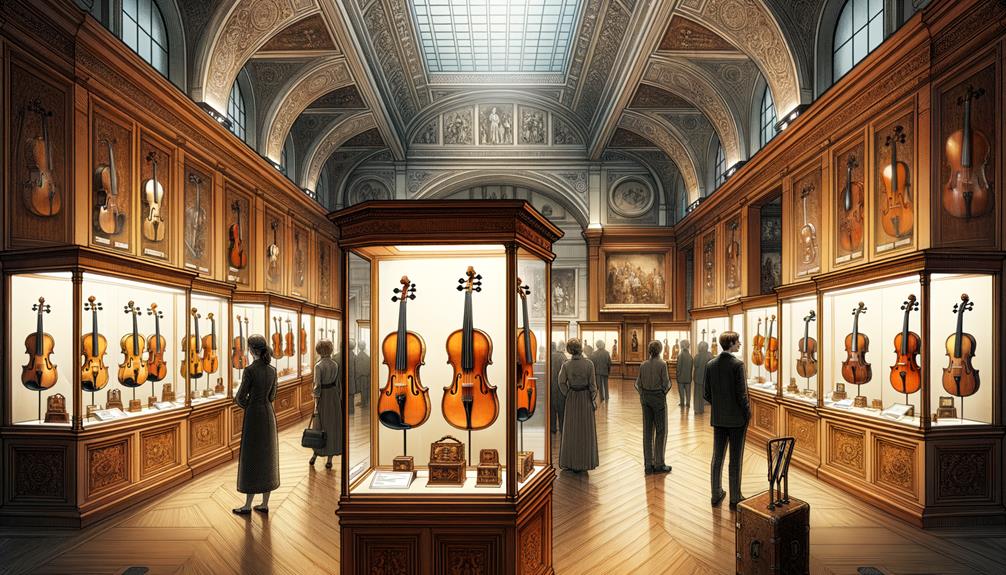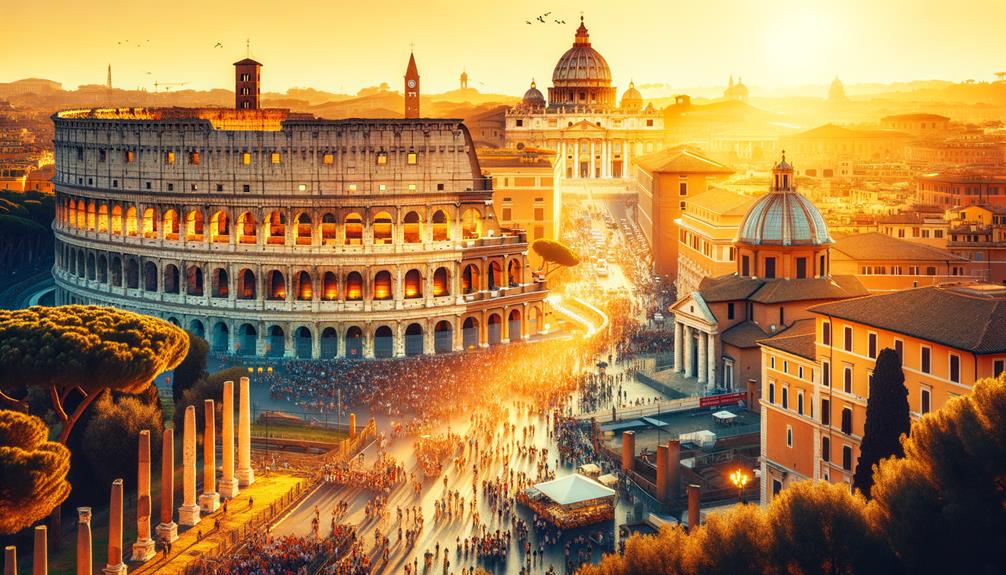Stepping into the Cremona Violin Museum, I was struck by how seamlessly the modern architecture of the Palazzo dell'Arte blends with the historic charm of Cremona's cobblestone streets. The displays, showcasing masterpieces like Stradivari's 'Messiah', exude a subtle elegance, each violin a testament to incredible craftsmanship. Walking through the Sound Lab, I gained a new appreciation for the nuances of sound and technique. What fascinated me most was how these ancient instruments continue to have a profound impact today, a connection that surely deserves further attention.
The Museum's Architecture
The Violin Museum, located in the Palazzo dell'Arte, elegantly combines the grandeur of its 1941 Fascist-era architecture with modern design elements, creating an inviting and immersive cultural experience. Walking through the entrance, I was immediately struck by the building's imposing height, which the architects cleverly softened to make it more approachable. The mix of historical and contemporary styles reflects Cremona's ability to respect its past while looking forward.
Inside, the museum's layout unfolds like a symphony. Small, purpose-built structures house multimedia installations and historical instruments, enhancing the journey through time and sound. The contrast between the heavy brick exterior and the sleek, modern interiors creates a dynamic tension that feels both respectful and innovative.
The Palazzo dell'Arte itself is a testament to thoughtful design. Its seamless integration into Cremona's historic city center makes it a natural extension of the town's rich cultural landscape. With a 500-seat auditorium, a musical instrument restoration center, a bar-restaurant, and a bookshop, the museum isn't just a place to view artifacts; it's a lively cultural hub. Here, history and modernity come together, inviting visitors to explore and reflect.
Stradivari Collection
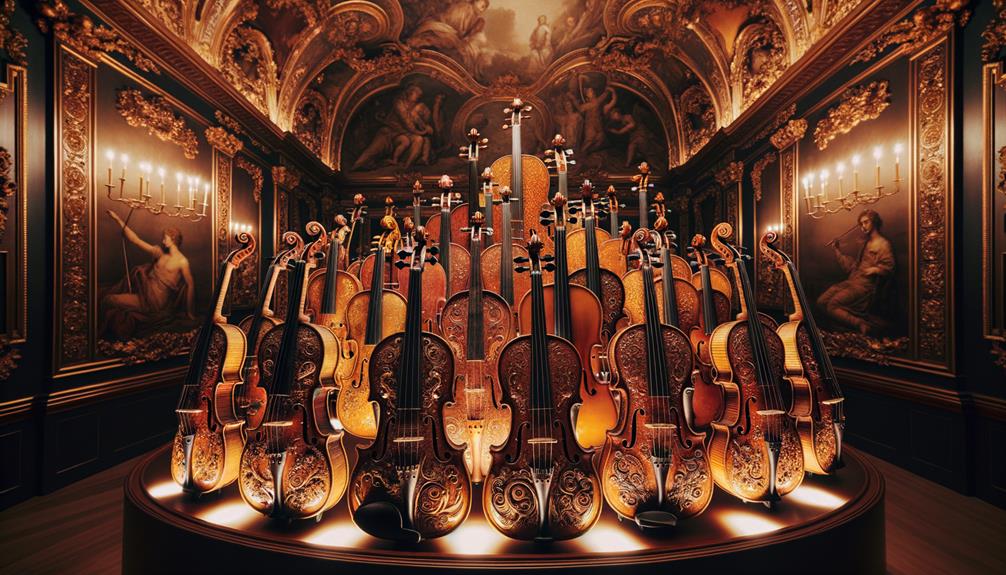
Entering the Stradivari Collection at the Museo del Violino in Cremona, I was struck by the incredible craftsmanship and rich history of these famous instruments. Each violin is a testament to Antonio Stradivari's skill and dedication.
- The 'Messiah' Violin: Often hailed as the peak of Stradivari's work, this violin remains in perfect condition, untouched by time.
- The 'Hellier' Violin: With its detailed inlays, it showcases Stradivari's talent for intricate design.
- The 'Lady Blunt' Violin: Known for its excellent preservation, it feels as though Stradivari just finished working on it.
- The 'Tuscan' Violin: This instrument's rich history and beautiful sound are true tributes to Stradivari's genius.
Each violin in the collection tells a unique story, blending artistry and innovation that continues to inspire today.
Sound Lab Experience
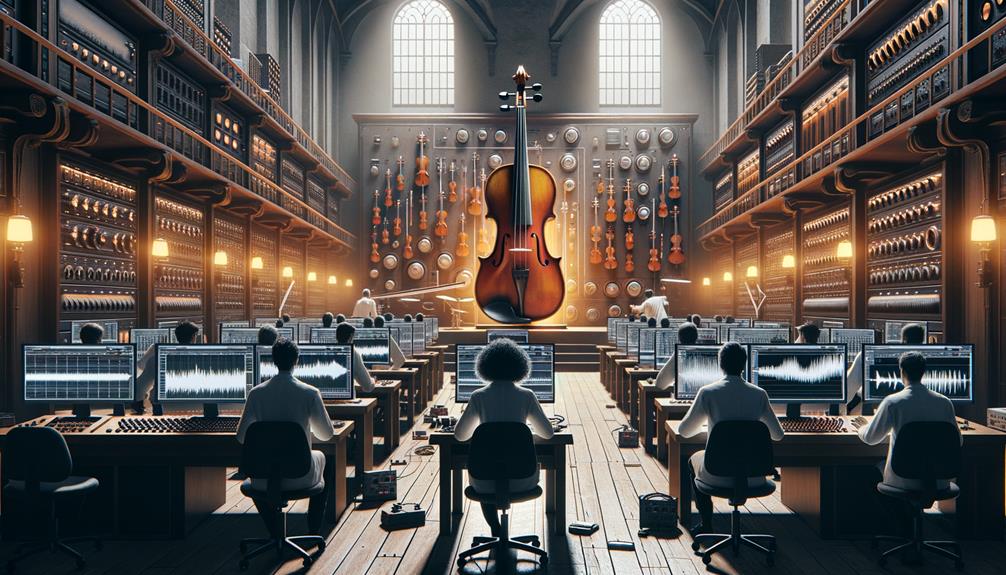
When I walked into the Sound Lab, I was instantly captivated by the interactive acoustic stations. Listening to historical violins side by side, I could pick up the subtle differences shaped by centuries of craftsmanship. These hands-on activities didn't just teach me; they made me appreciate the art and science behind each note even more.
Interactive Acoustic Analysis
Imagine standing in a room where you can tweak the shape of a virtual violin and instantly hear how it changes the instrument's tone. The Sound Lab at the Cremona Violin Museum offers this one-of-a-kind, hands-on experience, blending technology with the art of violin-making. I was captivated by the interactive exhibits, each station inviting me to explore the relationship between shape, craftsmanship, and sound.
In this immersive space, visitors can:
- Adjust a virtual violin's shape and materials to hear immediate changes in tone.
- Compare the acoustic properties of different woods, learning how each affects the instrument's sound.
- Understand the physics behind sound production, gaining insights into the complexities of violin-making.
- Engage with exhibits designed for all ages and knowledge levels, making the experience accessible and educational.
Reflecting on my time in the Sound Lab, I realized how crucial these factors are in crafting a violin's unique voice. This interactive analysis deepened my appreciation for the artistry and science behind these beautiful instruments. The freedom to experiment and learn in such an engaging environment was truly liberating, offering a fresh perspective on this age-old craft.
Historical Sound Comparisons
When I stepped into the Historical Sound Comparisons area of the Sound Lab, I was immediately impressed by the chance to directly compare the rich, nuanced tones of Stradivari and Amati violins with those of today. The room buzzed with excitement as I approached the digital system that promised to reveal the secrets of centuries-old violin craftsmanship.
I started by selecting a recording of a Stradivari violin. The sound that filled the room was warm and complex, each note carrying the weight of history and expert craftsmanship. Switching to an Amati violin, the tone was different but equally captivating, showcasing the distinct styles that define Cremonese violin-making.
The interactive setup of the Sound Lab allowed me to explore the acoustic qualities of each instrument. By examining frequency responses and sound wave patterns, I gained a deeper understanding of how materials, shape, and craftsmanship affect a violin's sound. This experience went beyond just listening; it was about grasping what makes these violins timeless.
For musicians, researchers, and enthusiasts, the Sound Lab offers a wealth of sonic history, providing insights that enrich the listening experience.
Temporary Exhibitions
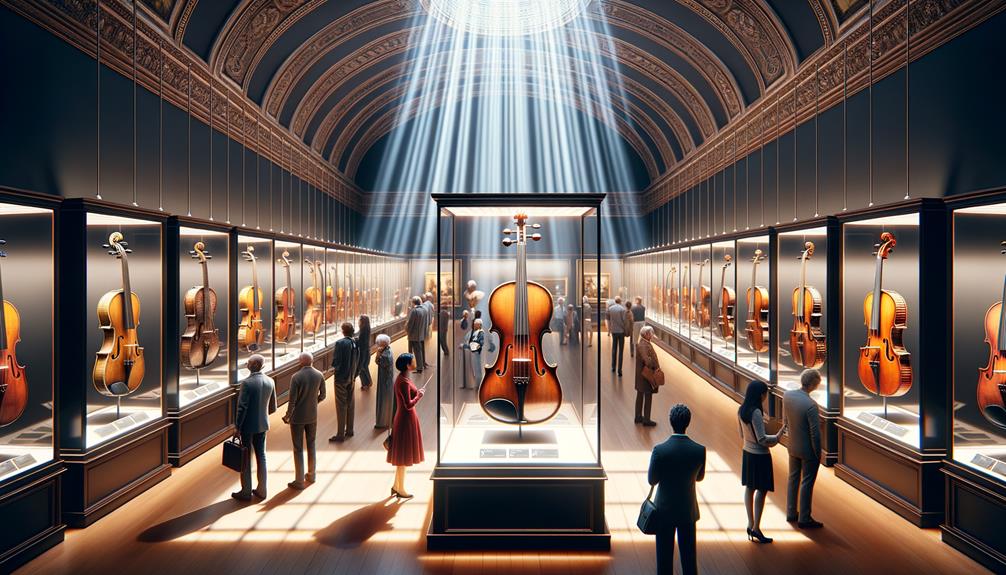
As I wander through the Temporary Exhibitions at the Cremona Violin Museum, I'm completely absorbed by the detailed artistry and history of violin-making. Each exhibit offers new perspectives and a closer connection to this beautiful craft. Moving through the museum, I feel the exhibits bringing the story of violins to life.
Here's what I encounter along the way:
- The Evolution of Violin Design: Displays showcasing how violin shapes and structures have changed over centuries, featuring rare prototypes and innovative designs.
- The Art of Varnishing: An engaging look at the varnishing process, with interactive stations to feel the textures and smell the resins used.
- Women in Violin-Making: A tribute to the contributions of women in the field, featuring the biographies and works of female violin makers from around the world.
- Collaborative Masterpieces: Instruments borrowed from other prestigious museums, giving a rare glimpse into historically significant violins not part of the permanent collection.
These Temporary Exhibitions are more than just displays; they're interactive experiences with hands-on activities, multimedia presentations, and workshops. Each visit feels like a new adventure, deepening my appreciation for the art of violin-making.
Auditorium Arvedi
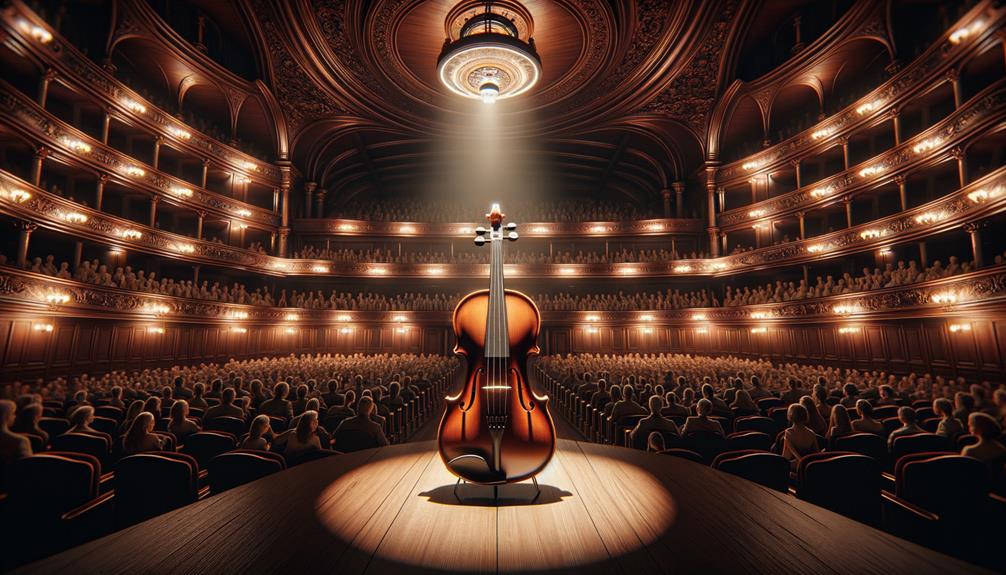
Stepping into the Auditorium Arvedi, I'm immediately taken by its elegant design and cozy atmosphere, making it an ideal spot to enjoy the beautiful sounds of historic violins. The flowing lines of the concert hall contrast nicely with the stark architecture of the Cremona Violin Museum's main building. This unique design choice makes the Auditorium Arvedi a captivating space where music, art, and history come together seamlessly.
As I sit down, I can feel the anticipation building in this 500-seat concert hall. The acoustics here are remarkable. Every note and subtle nuance of the violin's rich tones are captured perfectly. It feels like the Auditorium Arvedi was designed to honor the legendary craftsmanship of luthiers like Stradivari and Guarneri. The intimate setting allows each visitor to feel a deep connection to the performance.
Experiencing a live show here, surrounded by the rich history of the Cremona Violin Museum, is a must for any music lover or violin enthusiast. The Auditorium Arvedi offers a rare chance to fully immerse oneself in the legacy of these historic instruments.
Historical Luthiers
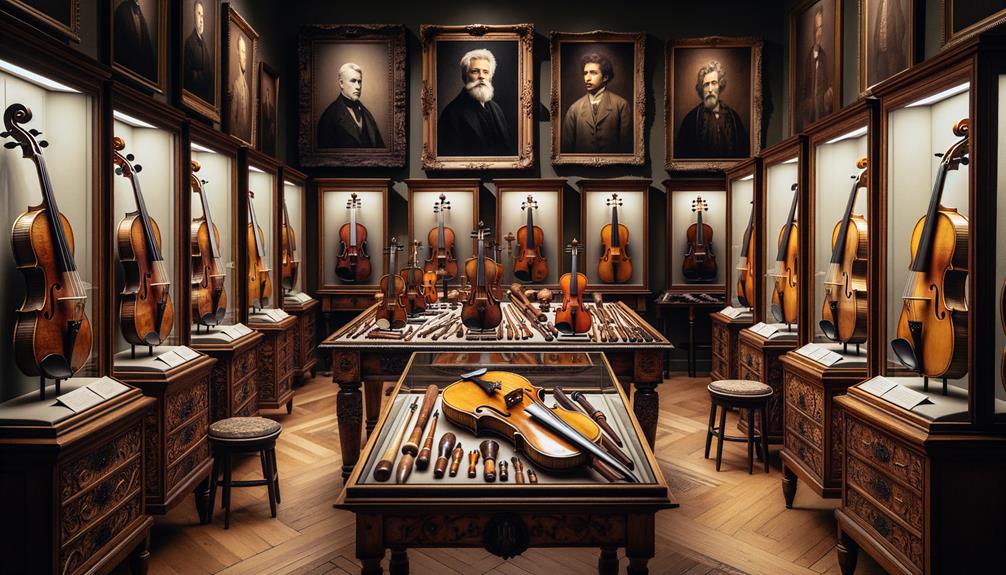
As I wander through the Cremona Violin Museum, I'm captivated by the legacy of luthiers like Antonio Stradivari, Nicolò Amati, and Andrea Guarneri. Their skill and innovative techniques continue to influence music today. The museum's exhibits highlight their meticulous craftsmanship and lasting impact on musical history.
Here are a few highlights:
- Antonio Stradivari's Workshop: This recreated space gives a peek into the environment where Stradivari crafted over 650 violins, violas, and cellos.
- Andrea Amati's 1566 Model: This early violin showcases Amati's pioneering techniques that laid the groundwork for modern violin-making.
- The 1727 Stradivarius 'Vesuvius': Known for its vibrant sound, this instrument represents the pinnacle of Stradivari's work.
- Guarneri's Tools and Forms: These artifacts, displayed with care, show the traditional methods Andrea Guarneri used.
Reflecting on these masterpieces, it's clear that the freedom these luthiers had to innovate and refine their craft still inspires musicians and makers today.
Library and Media

Walking through the Cremona Violin Museum, I realized that while there's no specific library, the audio guides and digital resources are incredibly informative. The interactive multimedia exhibits vividly showcase the history and craftsmanship of the violins, making the archival collections come to life. The bookshop, too, is a fantastic spot for anyone interested in learning more about violin making and music.
Archival Collection Highlights
The Cremona Violin Museum's library and media section is a goldmine of historical documents, recordings, and rare manuscripts that shine a light on the rich history of violin-making. Walking through the well-organized aisles, I felt a deep connection to the classic instruments, with each shelf whispering stories of the past.
It's hard not to be drawn in by the incredible details in the archives.
- Antonio Stradivari's Workshop Notes: Original sketches and annotations from the master himself, offering a look into his meticulous methods.
- Rare Manuscripts: Handwritten scores from the Baroque era, showing the evolution of musical notation and expression.
- Historical Recordings: Early 20th-century performances by legendary violinists, preserved on vinyl and shellac discs.
- Photographs and Letters: Personal correspondence and images, giving us insight into the lives of renowned luthiers and musicians.
Each artifact in this collection tells a story of passion and precision, reflecting the creativity that defines the world of classic instruments. As I explored further, I realized how these treasures connect us to the timeless legacy of Antonio Stradivari and his contemporaries, making history come alive in unexpected ways.
Interactive Multimedia Exhibits
Stepping into the museum's interactive exhibits, I was instantly drawn to the digital recreation of a violin maker's workshop. Every detail highlighted the intricate work of Stradivari, making it feel like I was witnessing history being made. I could virtually walk around the space, observing the precise techniques these master craftsmen used. It was like traveling back in time to see the creation of these musical masterpieces.
The Library and Media section was just as fascinating. Shelves filled with books, manuscripts, and audio-visual materials told the story of violin making through the ages. I immersed myself in the lives of famous violin makers, gaining a new respect for their artistry and dedication. The interactive sound lab was a real eye-opener. I tried out different woods and shapes, learning how each one affects a violin's sound. The hands-on displays made complex ideas easy to understand and fun to explore.
Virtual tours of historic workshops in Cremona and interviews with contemporary luthiers provided a comprehensive view of the craft, connecting the past with the present. The museum's interactive displays ensured that everyone, no matter their age or background, could appreciate this timeless art form. The Violin Museum brought the world of violin making to life in a truly engaging way.
Guided Tours
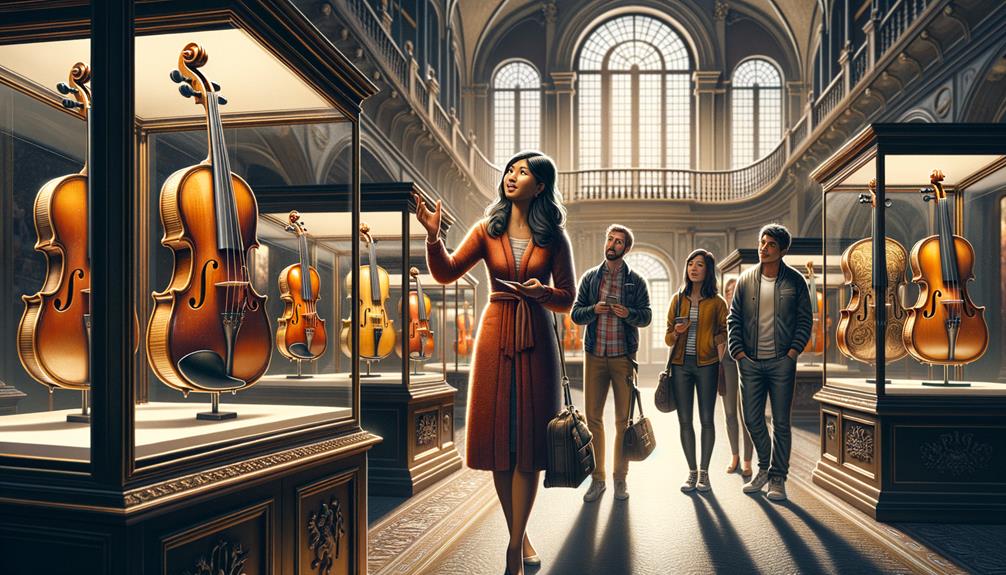
Taking a guided tour of the Cremona Violin Museum is a rewarding way to dive into the world of violin-making and history. Walking through the museum, the guide's expertise and enthusiasm made each exhibit feel alive. The tour offered a close-up look at the meticulous art of crafting violins, a skill honed over centuries.
During the visit, I saw:
- Workshops: Faithful replicas of historic luthier workshops, with tools and techniques used by legends like Stradivari.
- Masterpieces: Stunning violins, each telling its own story through its craftsmanship.
- Interactive Demonstrations: Live performances and demos showcasing the rich sounds and subtleties of these finely crafted instruments.
- Historical Context: Fascinating commentary on the evolution of violin-making, from its beginnings to its significance today.
Reflecting on the experience, I felt a deep connection to the artisans who pour their hearts into this craft. The guided tours at the Violin Museum aren't just informative; they're transformative, offering a richer appreciation for the art and history of violin-making. For anyone wanting to grasp the essence of this timeless instrument, a guided tour is a must.
Frequently Asked Questions
Is Cremona a Good Violin Brand?
Is Cremona a good violin brand? Actually, Cremona isn't a brand at all—it's a city in Italy. This place is renowned for its rich history in violin-making, producing some of the finest instruments in the world.
Who Is the Best Modern Cremona Violin Maker?
I've always admired the skill of modern Cremona violin makers. For me, Edgar Russ truly stands out. His violins have a unique soul, with a sound that resonates deeply. They beautifully blend tradition with innovation.
What Is the Secret of the Stradivarius Violin?
I've always been curious about what makes a Stradivarius violin so special. It seems like a mix of exceptional craftsmanship, unique wood treatments, and the passage of time all come together to create its legendary sound. There's a certain magic to it that feels almost impossible to replicate.
Who Was the Most Famous Violin Maker in Cremona?
Imagine a violin's sound soaring like a bird in flight. That's the magic of Antonio Stradivarius, the most renowned violin maker from Cremona. His craftsmanship allows musicians to create unmatched, ethereal music.

